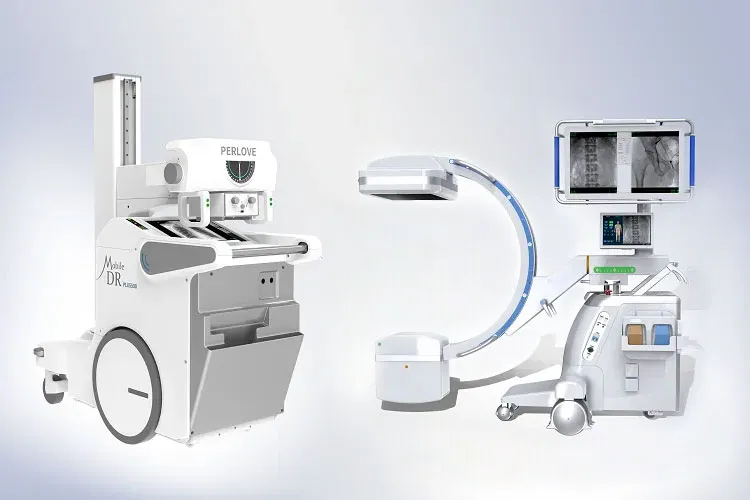Advancements in C-Arm and Portable X-Ray Medical Imaging

Medical imaging has revolutionized healthcare, providing clinicians with detailed insights into the human body that aid in diagnosis, treatment planning, and procedural guidance. Over the past few decades, technological innovations have significantly enhanced the accuracy, speed, and safety of imaging modalities. Among these advancements, C-arms and portable X-ray machines have become indispensable tools in hospitals, surgical centers, and clinics worldwide. This article explores the latest developments in these imaging technologies and emphasizes the importance of proper maintenance and repair to ensure optimal performance.
The Evolution of Medical Imaging Technologies
Medical imaging has come a long way since the early days of X-ray radiography. Innovations such as digital imaging, 3D reconstruction, and real-time imaging have dramatically improved diagnostic capabilities. These advances allow for high-resolution images, reduced radiation exposure, and faster results, ultimately leading to better patient outcomes.
Focus on C-Arms: Precision in Surgical Imaging
C-arm systems are fluoroscopy devices shaped like the letter “C” that provide real-time, high-quality imaging during surgical procedures. They are crucial in orthopedic, cardiovascular, neurosurgical, and pain management procedures, where precise visualization of anatomy is essential.
Recent Innovations in C-Arms
- Digital Flat-Panel Detectors: Modern C-arms now feature flat-panel digital detectors that deliver superior image quality with lower radiation doses. These detectors are more sensitive and provide clearer images, aiding surgeons in making accurate decisions during procedures.
- Mobile and Compact Designs: Advances in miniaturization have resulted in highly portable C-arms that can easily be moved within surgical suites or emergency rooms. This mobility enhances workflow flexibility and allows imaging at the bedside or operating room without the need for patient transfer.
- 3D Imaging and Reconstruction: Some advanced C-arms now incorporate 3D imaging capabilities, enabling detailed visualization of complex anatomy. This technology provides surgeons with multiple perspectives, improving surgical accuracy and reducing the need for repeat scans.
- Integration with Surgical Navigation: The latest C-arms can be integrated with surgical navigation systems, allowing for precise guidance during complex procedures. This integration enhances surgical precision, reduces operative times, and minimizes complications.
Portable X-Ray Machines: Flexibility in Imaging
Portable X-ray systems have seen significant advancements, making bedside imaging more accessible and efficient. These units are essential in emergency care, intensive care units, outpatient clinics, and field settings.
Recent Developments in Portable X-Ray Technology
- Wireless and Battery-Powered Units: Modern portable X-ray machines often feature wireless connectivity and rechargeable batteries, allowing clinicians to perform imaging without cumbersome cables or power constraints. This mobility improves workflow and patient comfort.
- High-Resolution Digital Imaging: Advances in digital detector technology have enabled portable X-ray systems to produce high-resolution images comparable to stationary units. This ensures diagnostic accuracy while maintaining the convenience of portability.
- Enhanced User Interface and Automation: Intuitive touchscreens, automated exposure settings, and AI-assisted image optimization have simplified operation, reducing the need for specialized training and decreasing procedure times.
- Integration with PACS and Cloud Storage: Contemporary portable X-ray systems can seamlessly connect with Picture Archiving and Communication Systems (PACS) and cloud platforms, facilitating rapid image sharing and remote consultations.
The Importance of Proper Maintenance and Repair
While technological advancements have enhanced the capabilities of C-arms and portable X-ray machines, their complexity and critical role in patient care demand rigorous maintenance and prompt repair services. Regular upkeep ensures that these devices operate safely, efficiently, and in compliance with regulatory standards.
Why Proper Maintenance Matters
- Patient Safety and Image Quality: Faulty or poorly maintained imaging equipment can produce suboptimal images, leading to misdiagnosis or repeat procedures. Regular maintenance ensures consistent image quality and safety.
- Compliance with Regulations: Healthcare facilities must adhere to standards set by agencies such as The Joint Commission, which mandates routine inspections, calibrations, and maintenance of imaging devices.
- Extending Equipment Lifespan: Proper care prolongs the useful life of expensive imaging systems, providing a better return on investment.
- Reducing Downtime and Costs: Preventative maintenance minimizes unexpected breakdowns, reducing operational disruptions and costly emergency repairs.
Specialized Repair Services
Given the complexity of modern C-arms and portable X-ray systems, specialized repair services are essential. For example, C-arm repair involves diagnosing and fixing issues such as image distortion, software glitches, or mechanical failures. Partnering with experienced service providers ensures that repairs are performed efficiently, restoring equipment to optimal working condition and maintaining regulatory compliance.
Best Practices in Maintenance
- Scheduled Preventative Maintenance: Regular inspections, calibration, and software updates help detect potential issues early. This proactive approach reduces the risk of sudden failures.
- Qualified Technicians: Only trained and certified technicians should perform maintenance and repairs to ensure safety and compliance.
- Documentation and Record-Keeping: Maintaining detailed service records helps track the history of maintenance and supports regulatory audits.
- Timely Repairs: Addressing equipment issues promptly prevents further damage and operational delays. Rapid response teams can minimize downtime and keep imaging services running smoothly.
The Role of Modern Service Solutions
Many medical equipment providers now offer comprehensive service plans, including remote diagnostics, scheduled maintenance, and on-demand repairs. These solutions leverage advanced tools and expertise to maintain high equipment uptime, ensuring that imaging devices are available whenever needed.
Medical Imaging Equipment and Proper Maintenance for Safe and Quality Patient Outcomes
The landscape of medical imaging continues to evolve at a rapid pace, driven by technological innovation and a focus on improving patient care. C-arms and portable X-ray machines exemplify this progress, offering enhanced image quality, flexibility, and safety features that benefit both clinicians and patients. However, to fully realize these benefits, healthcare facilities must prioritize proper maintenance and timely repairs. Partnering with experienced service providers ensures that these complex systems remain in peak condition, delivering reliable, high-quality imaging whenever it’s needed most.
As the industry advances, staying up-to-date with the latest innovations and maintenance practices is essential for healthcare providers committed to excellence. Whether investing in new technology or maintaining existing equipment, understanding the importance of proper care and expert support is key to optimizing imaging performance and achieving the best possible patient outcomes.

Source: Advancements in C-Arm and Portable X-Ray Medical Imaging



